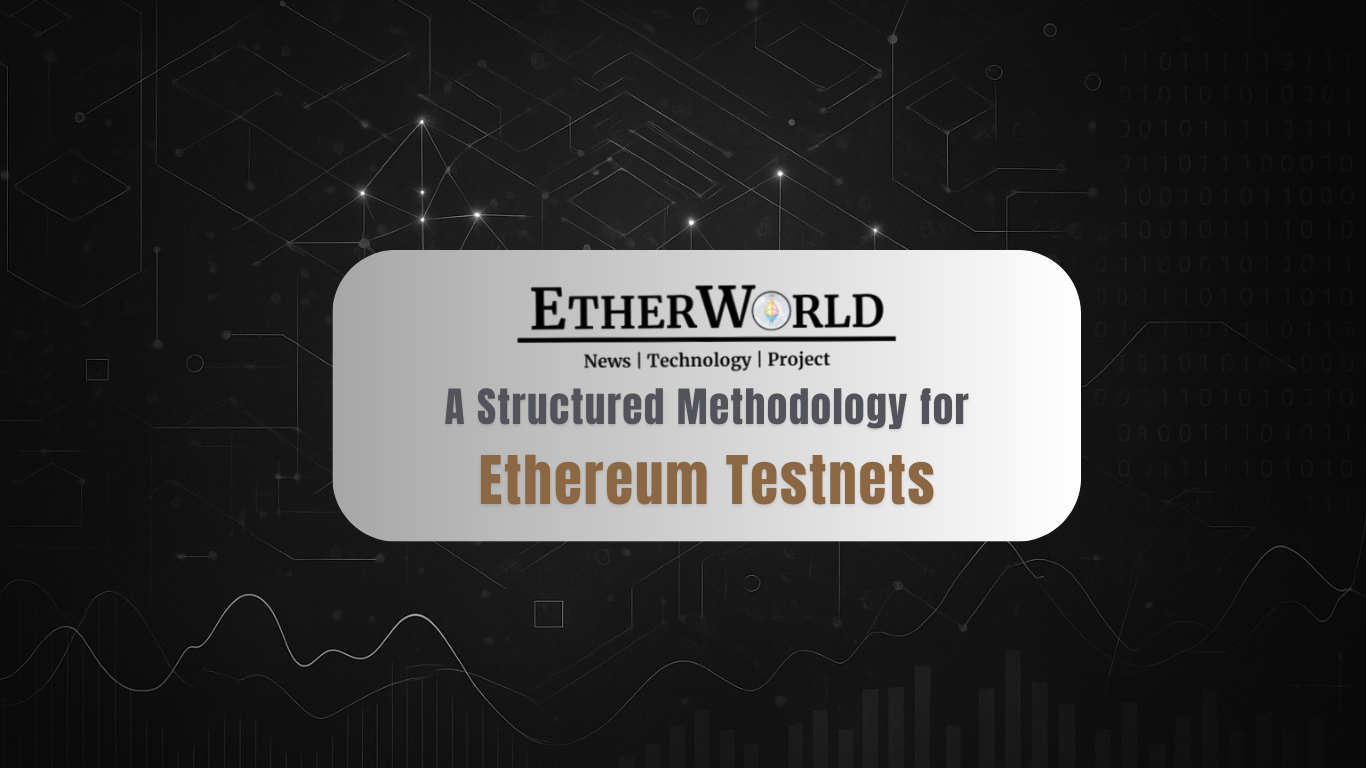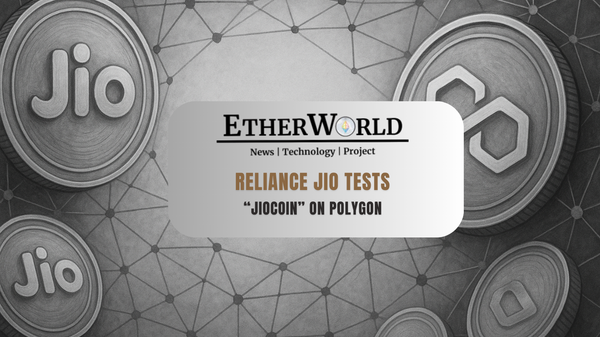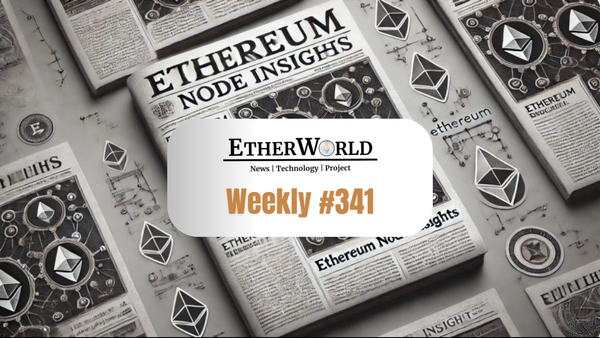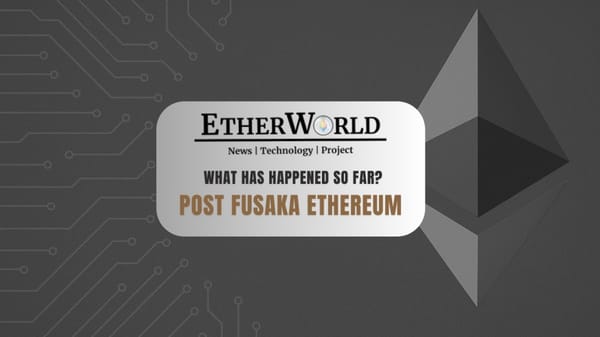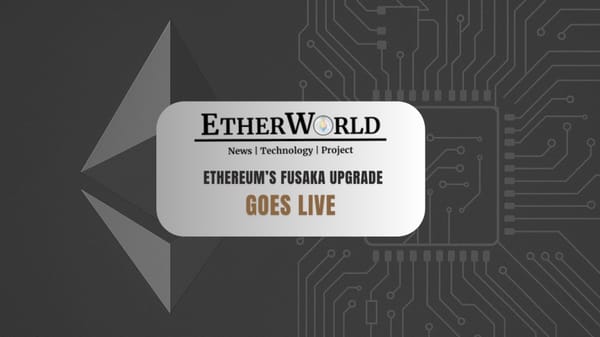As Ethereum evolves through frequent protocol upgrades & client optimizations, there is a need for stable and purpose-built test environments. Recent disruptions on popular networks like Sepolia and Holesky have highlighted the fragility of existing testnet infrastructure.
To address these challenges, a new methodology has been proposed that categorizes Ethereum test networks based on their intended use, stability requirements, and governance model. This article dives into the proposed five-tier testnet methodology and explains why such a framework is essential for Ethereum’s long-term scalability and developer support.
1. Mainnet
The Ethereum mainnet is the primary production environment. All real transactions, smart contracts, and decentralized services run here. It is designed to be permanent and immutable. Any upgrade must undergo rigorous testing and community scrutiny. It acts as the ultimate reference point, meaning all testnets should be modeled to reflect its behavior accurately.
The mainnet’s integrity is essential not only for financial security but also for developer confidence. As the ecosystem’s foundation, it informs the protocol rules and economic models that testnets aim to replicate under different conditions.
2. aTestnet (App Developer Testnet)
The aTestnet is envisioned as a long-term, stable testnet specifically for application developers. Its design addresses the operational pain points developers face when working with unstable or frequently deprecated networks.
By eliminating sudden deprecations and aligning more closely with mainnet conditions, the aTestnet allows developers to perform integration testing, simulate real-world use cases, and build dApps with confidence in a stable environment.
3. ceTestnet (Consensus + Execution Testnet)
This testnet tier is designed for Ethereum core developers who are preparing protocol upgrades. It exists specifically to validate proposed changes in a structured and controlled environment before they are introduced to mainnet.
The ceTestnet plays a crucial role in mitigating upgrade risks. It acts as a final proving ground, ensuring that only stable and thoroughly tested upgrades make their way to production.
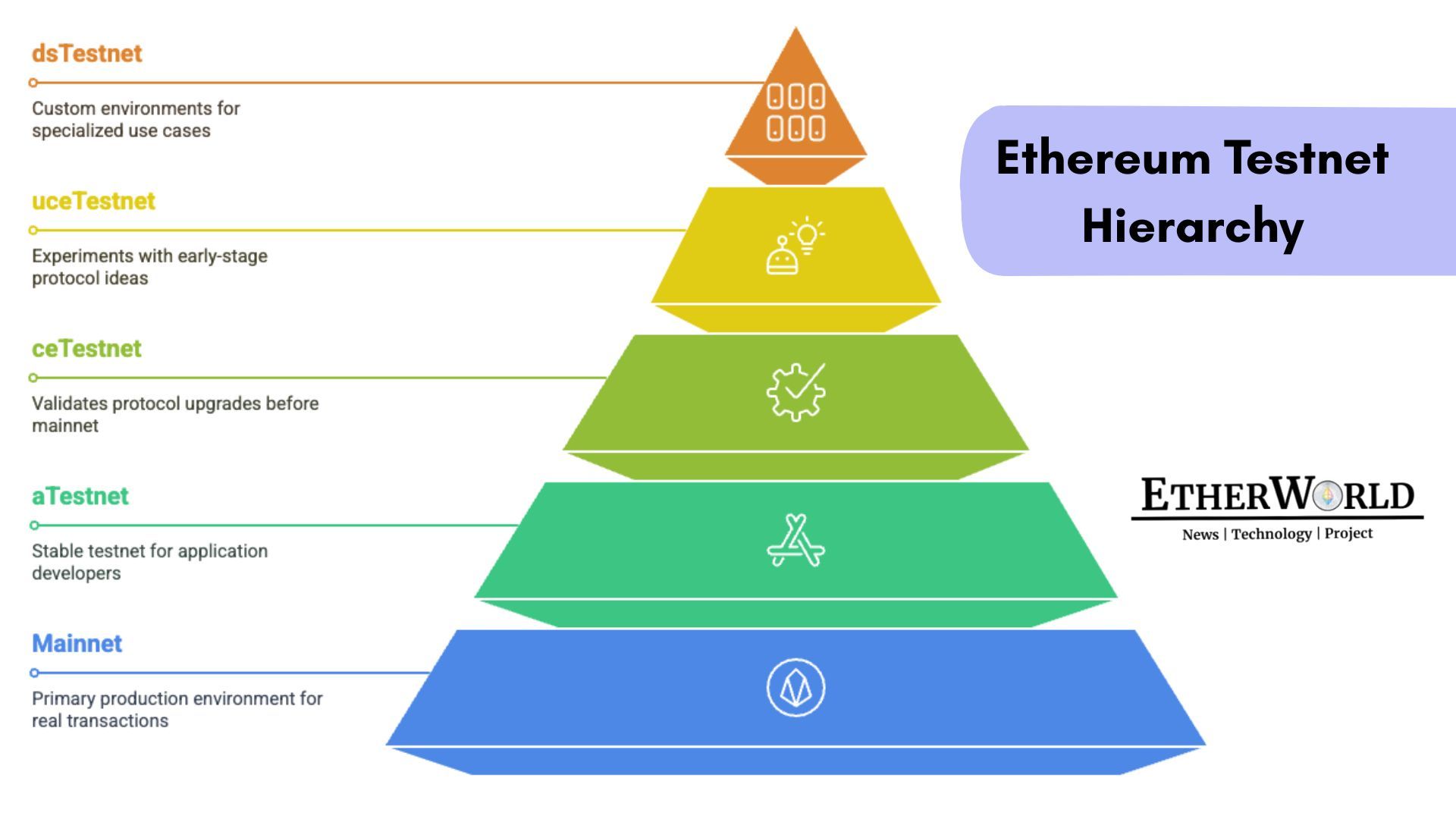
4. uceTestnet (Unstable Consensus + Execution Testnet)
The uceTestnet is intended for experimentation with early-stage protocol ideas. Unlike the ceTestnet, it is explicitly unstable, making it ideal for rapid iteration, experimental forks, and early feature testing.
This testnet tier allows researchers and developers to push the boundaries of Ethereum's protocol design without endangering the stability of more mission-critical testnets.
5. dsTestnet (Domain-Specific Testnets)
dsTestnets are custom environments created for highly specialized or niche use cases, such as rollup experimentation, staking research, or execution sharding. These testnets offer a risk-isolated sandbox for innovation that might otherwise disrupt more general-purpose networks.
They also prevent fragmentation by giving developers designated spaces to test advanced implementations without compromising the broader ecosystem.
Ethereum's success has long been tied to its ability to iterate, innovate, and onboard new developers. However, without a reliable and well-structured testing framework, the ecosystem risks fragmentation, inefficiencies, and loss of developer trust.
The proposed testnet methodology offers a scalable and rational approach to Ethereum testing. By clearly defining network types and purposes—from mainnet alignment to domain-specific exploration—this strategy empowers both application and core developers with the stability, predictability, and flexibility they need.
As the Ethereum roadmap introduces more complex upgrades like danksharding, statelessness, and new cryptographic primitives, this structured approach to testnet design will be crucial to Ethereum’s long-term health and developer productivity.
If you find any issues in this blog or notice any missing information, please feel free to reach out at yash@etherworld.co for clarifications or updates.
Related Articles
- Ethereum's Hoodi Testnet Launched
- New Ethereum Testnet ‘Hoodi’ Announced for Pectra Testing
- Holesky Testnet Support Ends in September
- Ethereum Testnets after The Merge
- The Evolution of Ethereum Testnets
Disclaimer: The information contained in this website is for general informational purposes only. The content provided on this website, including articles, blog posts, opinions, and analysis related to blockchain technology and cryptocurrencies, is not intended as financial or investment advice. The website and its content should not be relied upon for making financial decisions. Read full disclaimer and privacy Policy.
For Press Releases, project updates and guest posts publishing with us, email to contact@etherworld.co.
Subscribe to EtherWorld YouTube channel for ELI5 content.
Share if you like the content. Donate at avarch.eth.
You've something to share with the blockchain community, join us on Discord!


